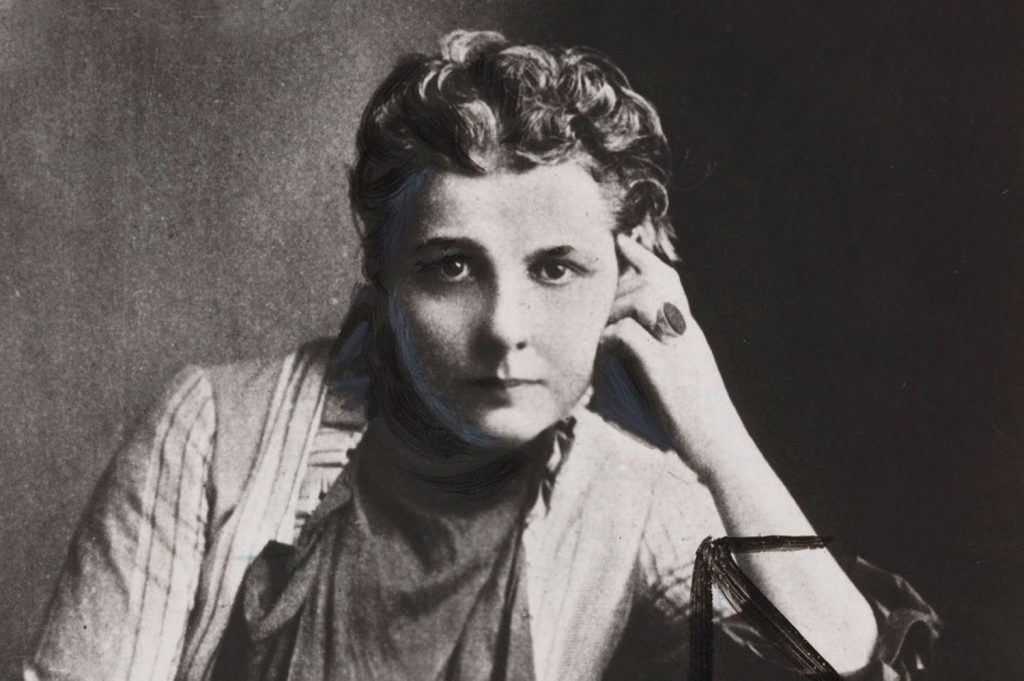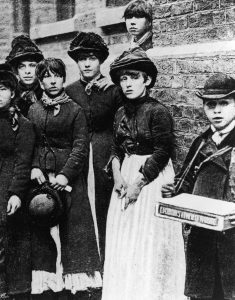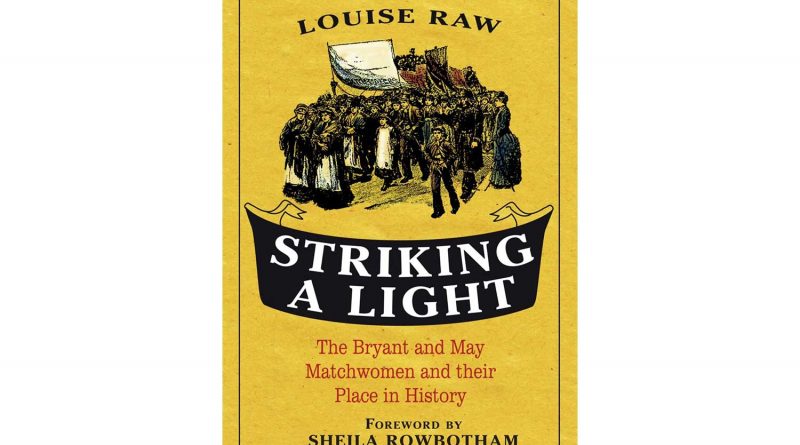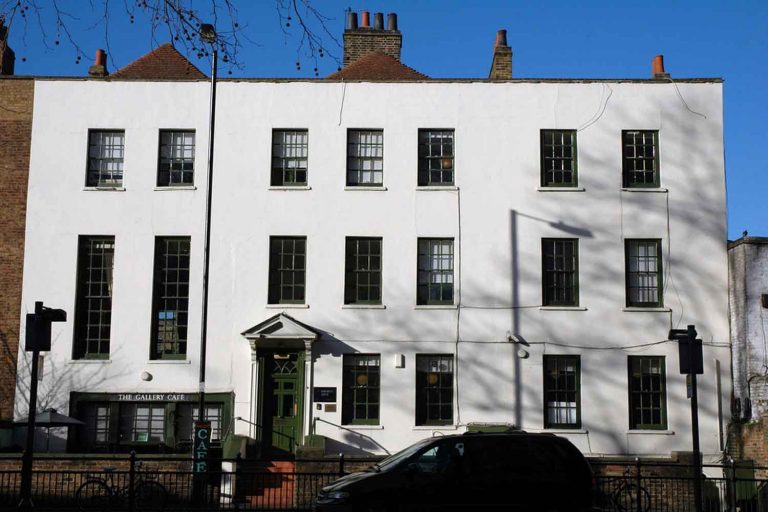Striking a Light by Louise Raw shines new light on Matchgirl strikes
Striking a Light is a fascinating account of the Bryant & May match girls’ strike of 1888 (or matchwomen as Raw prefers to call them) which sheds a new light on the women who organised it.
The inspiration for the strike did not come from Annie Besant, the middle-class Fabian Society member and Theosophist as was previously believed by most historians, but the match factory workers themselves, Irish Cockney working-class women who organised their strike, picketed, collected funds and negotiated with MPs and with their employers, Bryant and May.
Raw makes a strong case for the reason why Annie Besant was given such a prominent role in the strike in historical records at the time, despite her own protestations to the contrary. She was a charismatic, notorious woman.
Although not quite a ‘lady’ in the Victorian sense of the word, she was a high-profile figure when she interviewed some of the matchwomen of Bryant and May for an influential article she wrote called ‘White Slavery’ describing their appalling working conditions.
A clever journalist, Besant hoped to lead a boycott on Bryant and May’s products. When the Bryant and May factory owners sacked some of the young women who had talked to her on trumped up charges, the whole factory walked out in sympathy. However, Besant had no knowledge they were doing this until they came to see her and in fact commented that striking would not be effective.

Local commentators, including many journalists and socialist sympathisers, found it convenient to view Besant as the ‘tinder’ which sparked the strike. The Bow ‘Factory girls’, given to drinking in pubs, dancing at the Paragon on Mile End Road and fashionable dress including colourful feathered hats and heavy earrings, were seen as ‘a rough set of girls’. They sometimes got into street fights and knew how to defend themselves physically. Recasting them passive victims in need of rescue made it easier to gather sympathy for their cause.
The factory workers – mainly female, mainly Irish by descent (as evidenced by Raw from painstaking local research) – worked very long hours in dangerous conditions. They sometimes lost fingers in machinery (‘never mind your fingers, look after the machine’ one was told) or were burned by matches but worst of all, were at risk of slow poisoning from the white phosphorus of which the aptly-named ‘Lucifer’ matches were made.
Although the factory owners were aware of the dangers of ‘phossy jaw’ – an agonising condition which started with toothache and usually ended up with the decay of the entire jaw and finally, a painful death unless the jaw was removed – they rejected the safe ‘red’ phosphorus for the cheaper and more popular white phosphorus, which could be struck on any surface.
At the time of the strike, women were only allowed to eat on the factory floor, which meant that their meals were inevitably contaminated with phosphorus. Being around the fumes made them nauseous and there are descriptions of people leaving fluorescent vomit in the street outside the factory gates. And all of this took place in conditions of low pay and high insecurity. If a woman showed signs of ‘phossy jaw’, she was instantly dismissed.
Raw has researched the identities, addresses and stories of the main strikers (whose names were kept on a secret list by their employers) and has managed to track down descendants of three of them to flesh out the facts. All three women were proud of starting the strike and their descendants remembered them talking about it.
One, Mary Driscoll, told her children ‘Always hold your head up. Remember you’re as good as anyone’. Raw has identified her in the famous ‘Factory’ photograph as the tallest girl looking at the camera with her sister Mog’s hand resting on her shoulder.

In the strike committee photograph of the Matchmakers’ Union the martchwomen went on to form, Mary and Mog are probably the two women standing to Annie Besant’s left on the platform. Mary married a docker (traditionally, the matchwomen tended to marry dockers who were part of their close-knit community, one of the facts Raw uses to add weight to her convincing argument that the successful matchwomen strike inspired the Dockers’ Strike the following year).
She gave birth to eleven children, five of whom died (not unusual in these times). He was a violent drunkard and after he died Mary’s fortunes took an upward turn. She ended up running two shops in Stepney near Salmon Lane and was a successful, hard-working businesswoman who would ‘fight her corner’ according to her daughter.
Eliza Martin was described by a journalist from the Star in a rare contemporary report. ‘One of the leaders of the strike – who, with her companions on the Committee, stood behind the table and checked entries – was Eliza, a girl with a Titian-like bloom on her handsome face, the figure of an Amazon, and the softest violet eyes’. No photos of her as a young woman exist, but she was clearly striking.
She married a fishmonger from Mile End and had nine children. However, her husband was violent and brutal to his family and she eventually killed herself rather than face his anger about some household money she had secretly given to their children.

Martha Robertson married a ‘tea porter’ and went on to have eight children with him. He was missing presumed dead in the First World War, but she discovered him alive, badly injured, on a hospital visit. She was the unofficial neighbourhood midwife and undertaker, an East End matriarch who people would go to in a crisis.
She loved to visit pubs for a ‘beano’, play the piano and sing and apparently had a boyfriend or two as well. Her grandson remembered her as an old lady saying in a pub; ‘If it kicks off, just prop me in the corner and I’ll take ‘em on with my stick’.
One small criticism of this riveting book is that the section where the individual matchwomen are introduced to the reader is towards the end: the story of the strike might have been improved by telling it a little more from their perspective, but Raw is a very conscientious historian and presumably felt there wasn’t enough raw material, in spite of her efforts, to draw upon.
As it is, the book retells the story of the first successful strike in East London and gives the women who began it proper credit. They won better wages and safer working conditions inside their factory, created a successful workers’ union, and made history, so it is important for their lives and names to be properly remembered.








